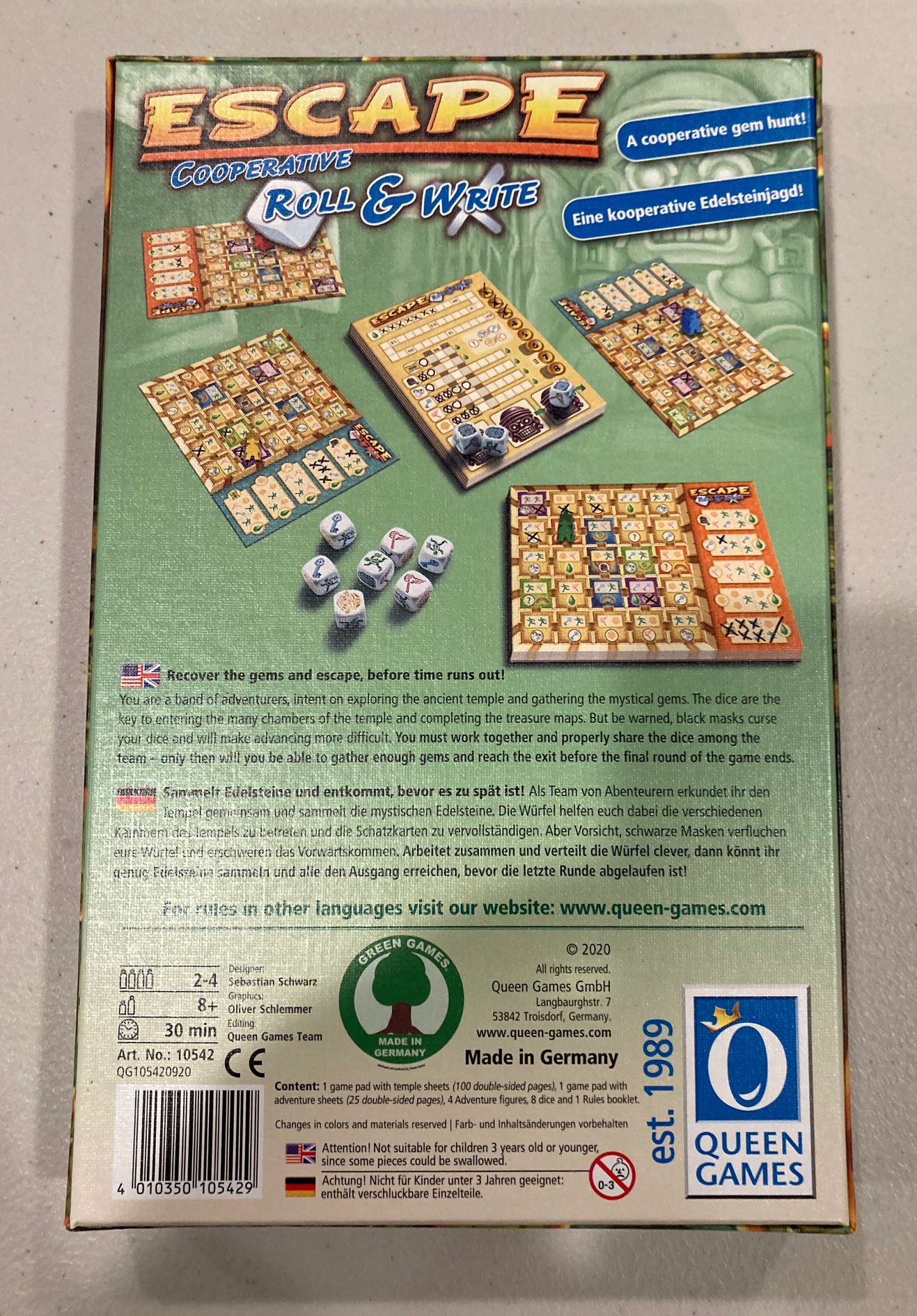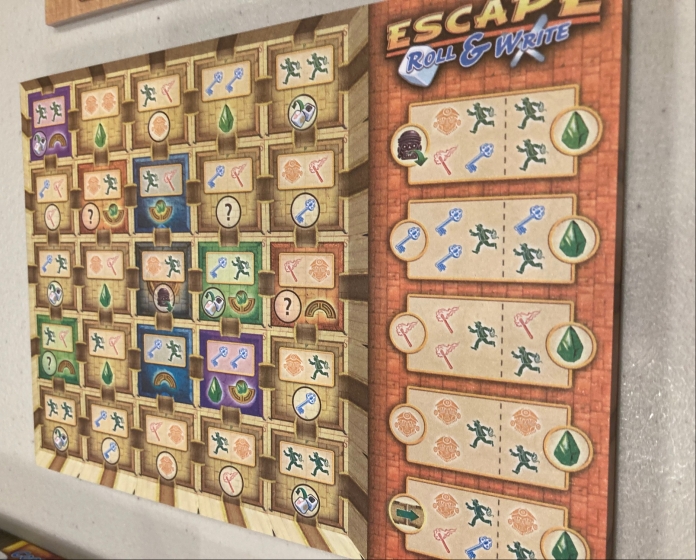Roll Camera! is a cooperative dice-placement game for 1-4 players (ages 10+) lasting about 45-90 minutes.
This game was originally on Kickstarter, but I didn’t pick it up there: I saw a copy of the game and it looked real interesting, so I went looking for it! The only place I found it was funagain.com and was luckily able to get the Clapper box edition:
As ridiculous as it sounds, the Clapper box version got us “into” the game: I can’t tell you how often we would open the box and say “Action!” with the little box (see above). At the time of this writing, the clapper version is sold out, but you can still get the standard edition.
Unboxing

This game has really cute art with a … bean theme? The name of the company is Keen Bean …

The components are very high quality! From the Clapper to the insides. The game is packed very nicely in the box (see below)
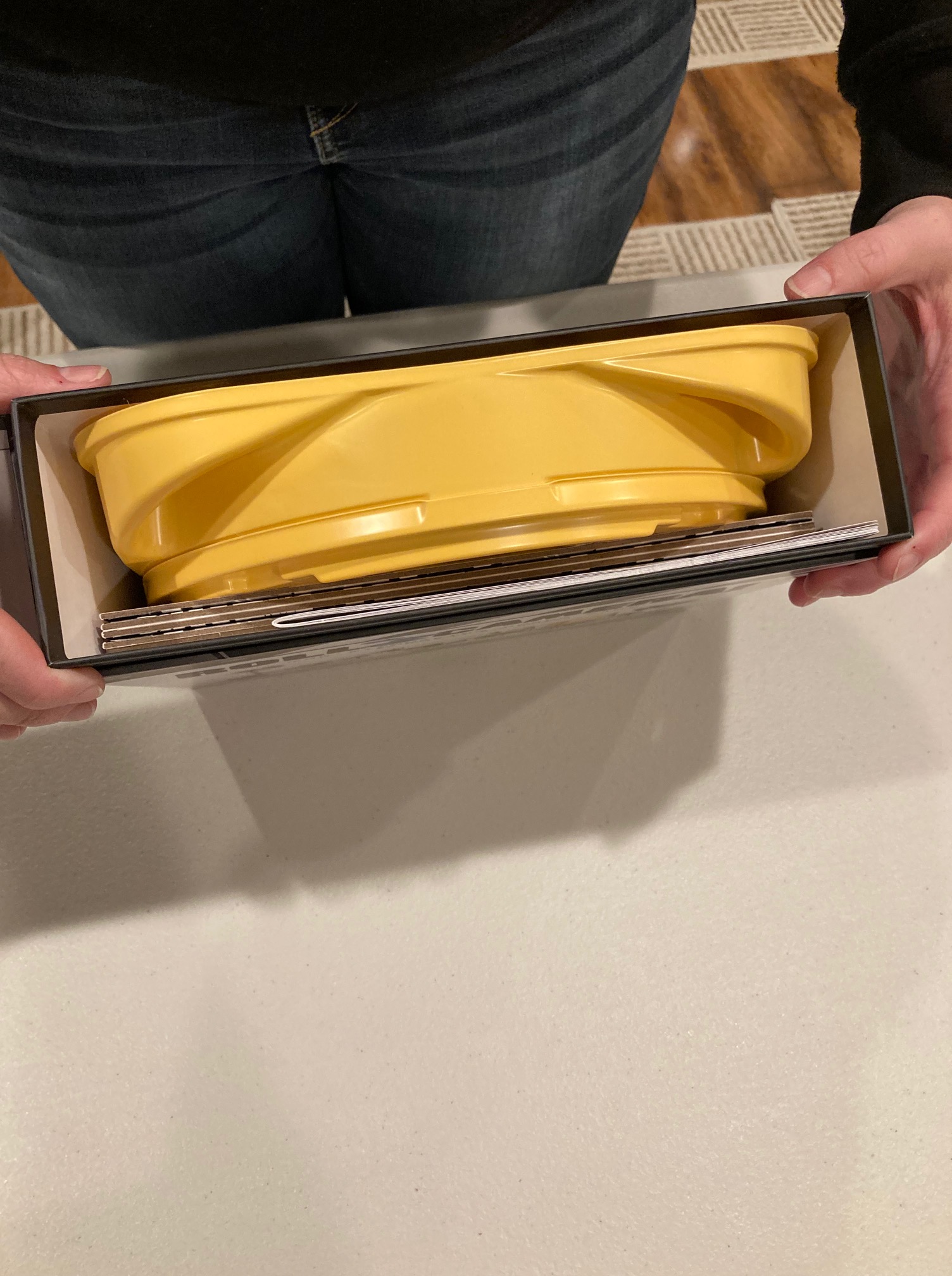

The main components come out easily (see above).

The little yellow plastic insert has the rest of the components. You can see the player boards are easy to read (and even have “spot” highlights to make it look a little nicer). Under the player boards are …

The cards and dice (and the spinner) and in the rest of the box. All of the cards and components are easy to read and very thematic with beans making movies. (Not a sentence I thought I’d utter very often).

The cardboard punchouts are mostly the bluish locations are for “set pieces”. There’s also some blocked pieces, and a … a bean.
The rulebook is linen finished and really easy to read.

The spinner maintains two important notions in the game: the schedule (how many turns the games lasts) and the budget (how much money you have to shoot):

The spinner is easy to set-up: when you turn it over, you see how to set the difficulty:

The cards are very nice and linen finished.
Overall, the components for this game are lovely, consistent, and easy to read.

I was pleasantly surprised how cute and how good the components were!
The Rulebook

The rulebook is very good: it’s linen-coated! It is also incredibly thematic … it looks like a script with typewriter font! Luckily, that typewriter font is easy to read: see below.

The rulebook follows the format of all good rulebooks: Overview (above), Components (below) and then Set-Up (further below).

The next page (above) lists components: easy-to-read and easy-to-correlate pieces. Note the use of color to help distinguish pieces and cards.

The Set-Up is easy to read and is well-notated. I had no problem setting up the game.
I freely admit our first look at this rulebook was intimidating: it has 22 pages!! (24 if you count back and cover). We were going to play at the end of the night, but we were too tired and intimidated to try.
Here’s the thing: this was a very good rulebook. There’s a lot of text, but it’s well-written and has enough pictures to illustrate it’s points.

I read the rulebook and didn’t struggle at all. It’s a little long, but once you learn the game, it’s easy to teach others and you don’t really need the rulebook except for a few questions.
Great rulebook: linen-finish, big-easy-to-read font, and lots of illustrations. The rulebook looks more intimidating than it is, but it’s quite good.
Solo Game

This game adheres to Saunders’ Law: it has well-stated solo rules! See the little blurb above! Once you learn the core rules, there’s just a minor change (discard 2P+ cards).

The game is easy to set-up and play solo. I was able to learn the game well enough to teach multiple game groups. It’s also pretty fun solo.
Gameplay

Roll Camera! is a cooperative dice-placement game.
On a player’s turn, they roll the dice and place them on the board, activating actions to help the movie to get made.

To win the game, you need to film 5 scenes and have either a quality movie, or a movie so bad it’s good! You need to do this before you run out of time and money. The little meter at the right edge of the board represents the film’s quality.

The worst thing you can do is make a mediocre movie, so if you do film 5 scenes, the quality needs to be out of the pink zone in order to win.

In order to film a scene, you need to put out some set pieces (see above) and place dice appropriately on them.
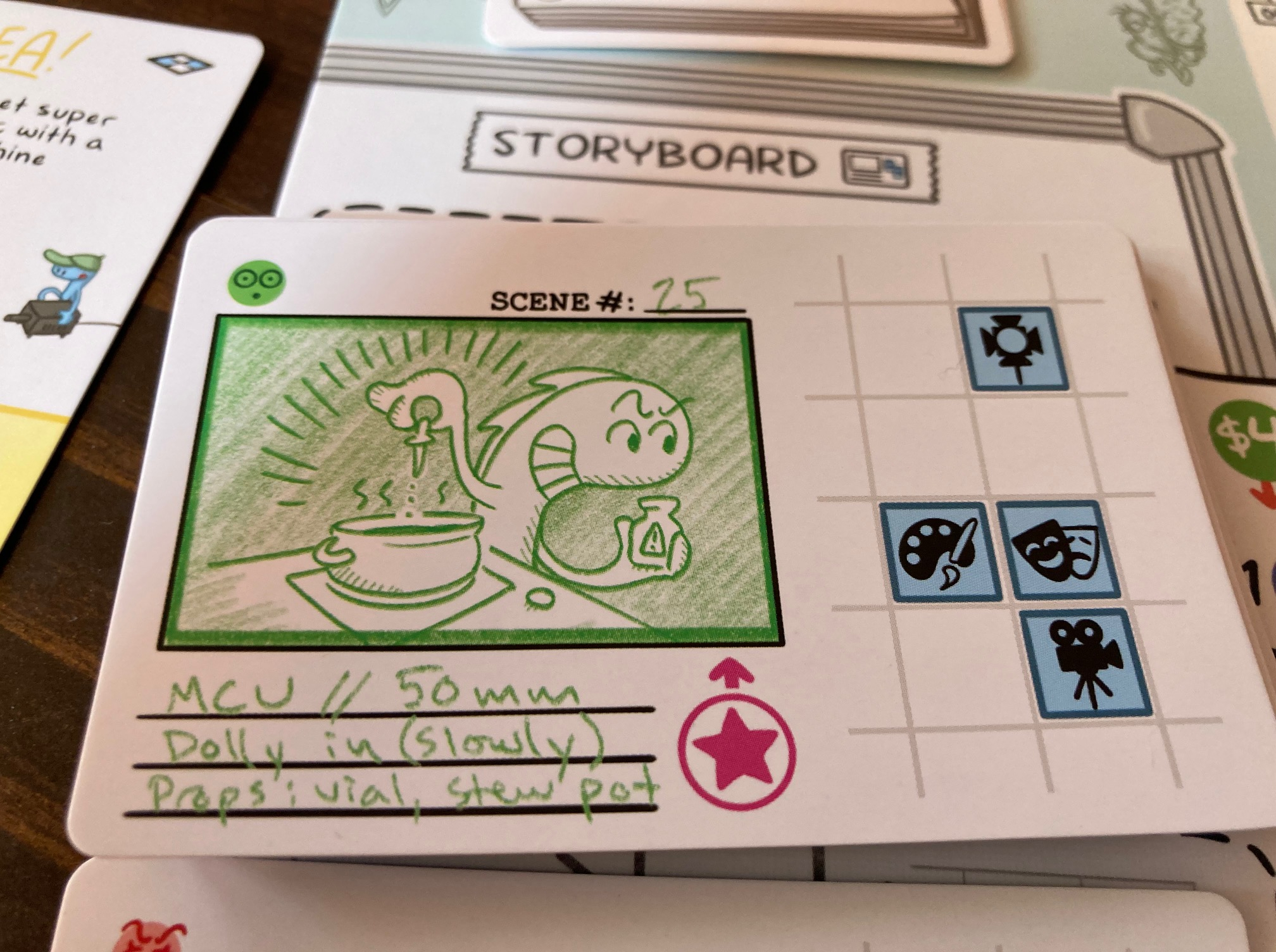
To film the above scene, we need some set pieces on the middle of the board with the dice (rotated in any way except mirror image):

Note that we can only place dice if there are “blue” places on the set. Above, we have filmed the scene!
In general, the spinners have the basic flow of the game:

The problem cards go at the top of the board and “mess with you” (like most cooperative games, it’s the Bad News deck):

See above for sample problem. There are several ways to deal with problems, usually involved with placing you dice on space. The earlier you get rid of a problem, the easier it is to deal with.
Special Powers
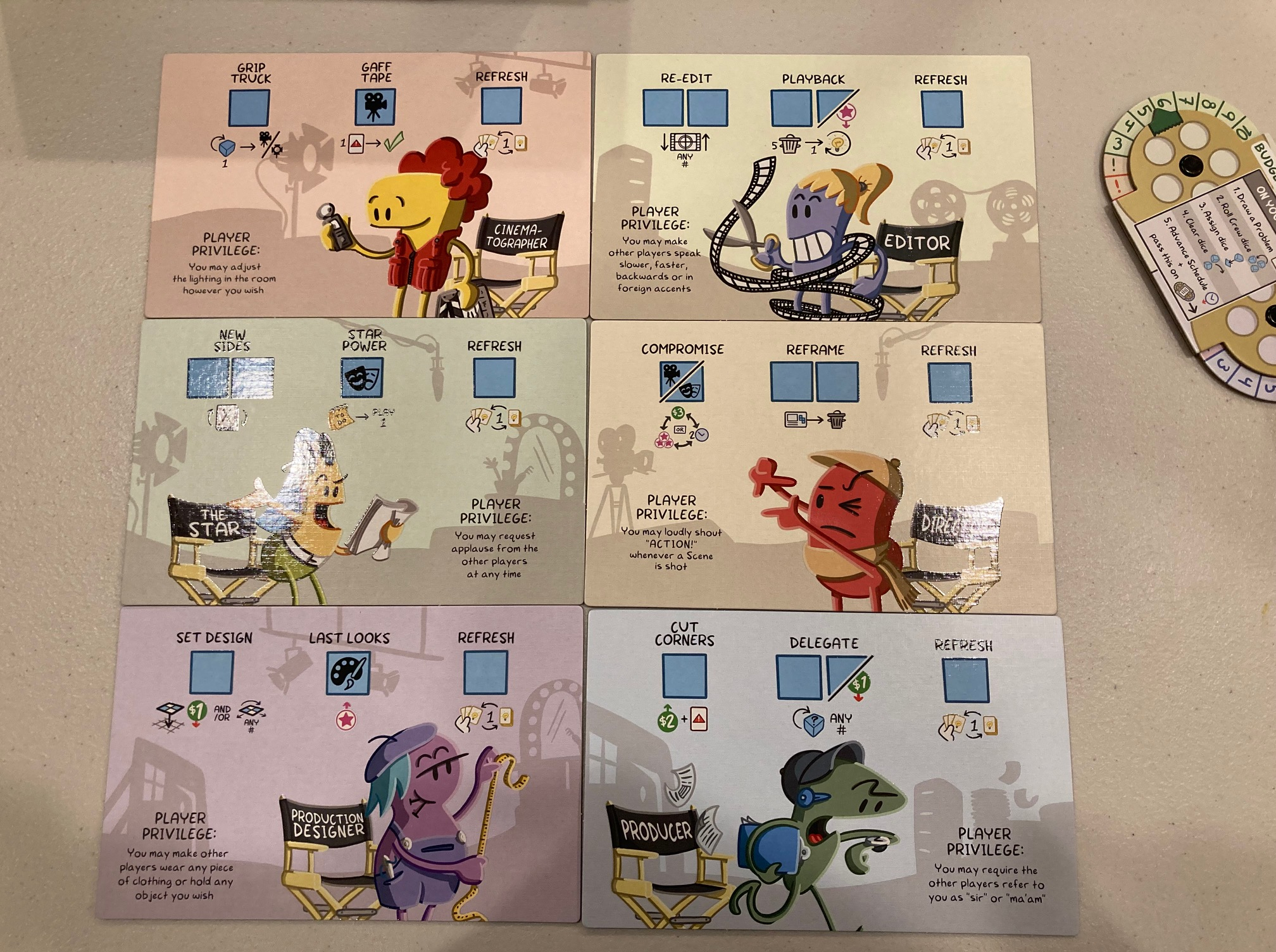
So, every player in the game has special powers depending on their role. This goes a long way towards making this game more fun. For example, I played the Cinematographer, and he can spend just 1 CAMERA die to discard any problem (the Cinematographer is a “problem solver”): can also turn any die to a LIGHT or CAMERA (at the cost of another die). Each player has very different powers!

I wanted to point out that the player summary cards are specific to each player: this is fantastic! Usually, player summary cards are generic and describe the game, but Roll Camera! is specific! *Applause!* I think more cooperative variable player power games should do this!
Player Privilege

And … each player also has a “Player Privilege”. This is a meta-game ability that has NO EFFECT on the gameplay but makes the game silly. The Director (side A above, side B is a different player privilege) “may request that other players express their emotions more theatrically”. This is a TOTALLY RIDICULOUS thing that you will either love or hate. Another example, in one game, the Production Designer made us all wear stupid hats:

You know right away if you think this is the greatest thing ever or the dumbest thing ever. It really depends on the group.
Sense of Humor

This game is a real and it is a challenging cooperative dice-placement game, but IT IS SILLY. It probably would have made our Top 10 Cooperative Board and Card Games With a Sense of Humor if we updated it today! The art is silly (I didn’t know that Beans could make a movie):

The Player Privilege obviously contributes to the silliness of the game: I had to wear a hat too …

To be clear, this game is silly. But it is still a challenging game! Roll Camera! is much more than a party game, even though the art might suggest otherwise. In fact, I’d say this is about as difficult as Intrepid: another cooperative dice–placement game we reviewed a few weeks ago, but Intrepid “looks” harder because the theme is more serious (running a space station). Roll Camera! is a serious dice-placement game of the same caliber as Intrepid or Endangered (another cooperative dice-placement game we reviewed here).
Cooperation

One thing Roll Camera! does really well: it keeps everyone involved when the Production Meeting happens. Generally, most players will call for a Production Meeting on their turn (it only costs one die of any symbol) and 2 other players can put ideas out!

Each player starts the game with 3 ideas: see above! They are very powerful but allow you to make tradeoffs, depending on where you are in the game:
People! We are running out of time! We are in dire need of some extra time to film!! Does anyone have any ideas on how we can do this? I have one involving monkeys … does anyone have a better idea?
When a production meeting is chosen, all players have to figure out if they should be involved (“Nah, none of my ideas help with time”) or not, and then 3 people share ideas during the Production Meeting!! The active player then chooses an idea!!

This mechanism is clever because it allows all players to be involved, even when it’s not their turn (the active player rotates around the table). We found that this mechanism was critical to making this game fun and cooperative! It really promoted cooperative play.
Making Movies

This game is all about making movies! You might think “Oh, this only appeals to people who want to make movies” or “people in the film industry“. Not at all! None of my friends are really film people (they are Engineers, English Majors, Teachers, Anthropologists, and Math Majors) but they all enjoyed this game. It’s not a niche theme.
One of the best parts of the game is interpreting your movie when the game is over: See my first film above!! It was a movie about a man who poisoned someone (scene 1), killed the victim (scene 2), has a confrontation with the family about the murder (scene 3), went to a clown birthday party (scene 4) and then finally went to the victim’s funeral (scene 5). How does the clown birthday party fit in?? That’s what makes this game great!
Conclusion

I think Roll Camera! is a surprise hit! I have played it solo, and with three very different game groups, and frankly, everyone loved it! However, it really depends on the game group. All of my game groups have a sense of humor but they still play complicated board games! My game groups were able to appreciate the dichotomy of the serious, challenging, cooperative dice-placement game in direct opposition to the silliness of Player Privilege, Bean art, and crazy Idea cards of Roll Camera!
The production (no pun intended) of this game is tremendous, with a Clapper box, linen-coated cards, spot-coated boards, a linen-coated rulebook, and very cute art. The game looks like it might be a party game, but it’s not! It’s a difficult and challenging cooperative dice-placement game where the cooperative nature really is emphasized by the production meeting mechanism.
In the end, you will know if you will like Roll Camera! from this review: if the silly nature of the game makes you roll your eyes and think “that looks dumb”, then Roll Camera! is not for you. But, if you like the cooperative dice-placement idea and the silly nature seems like a benefit rather than a detriment, then I think you would really like Roll Camera!
As it is, I am pretty sure Roll Camera! will make my top 10 cooperative games of the year 2021!























